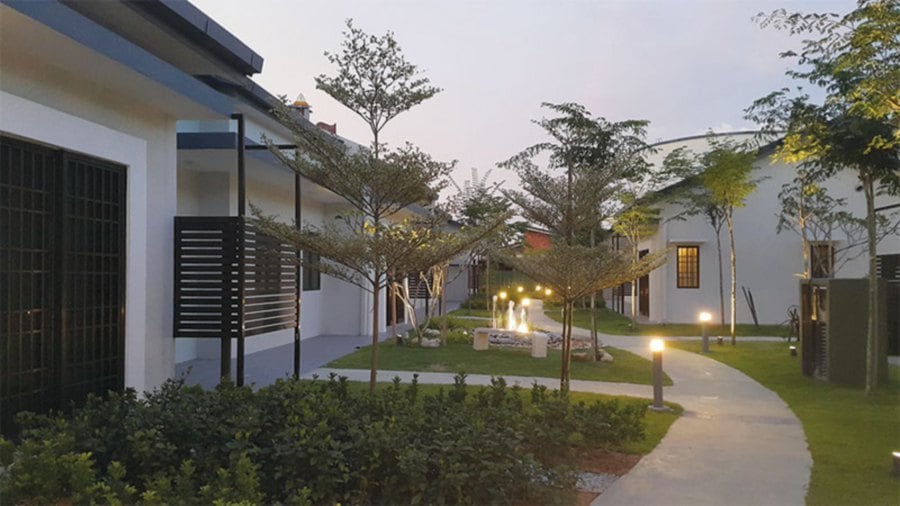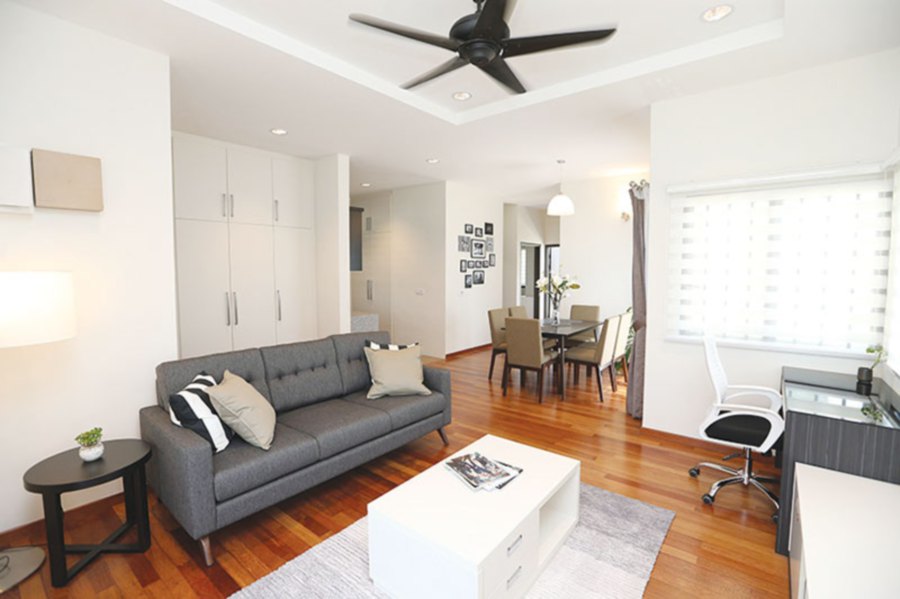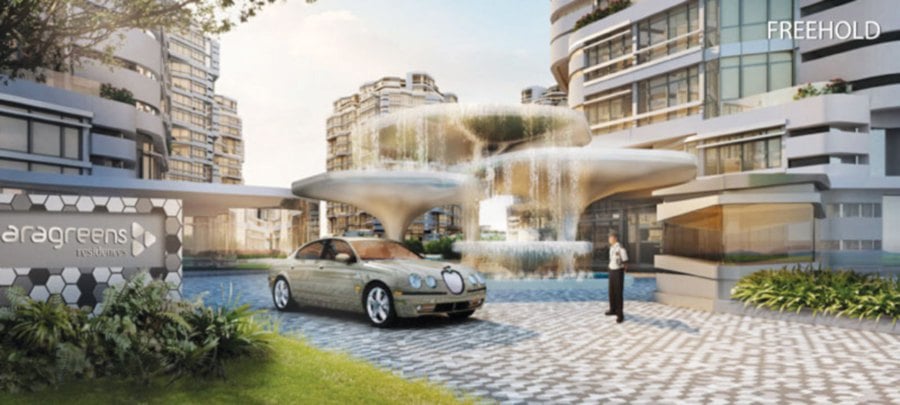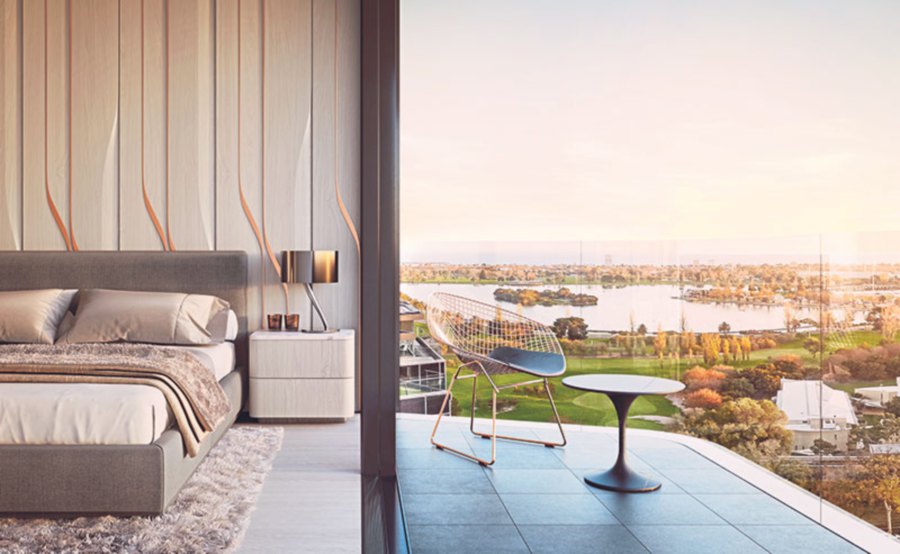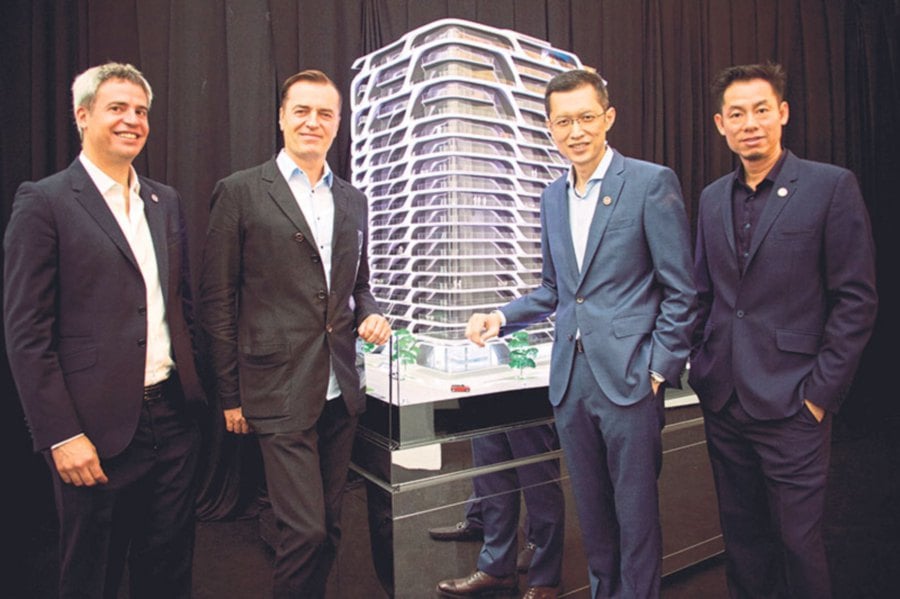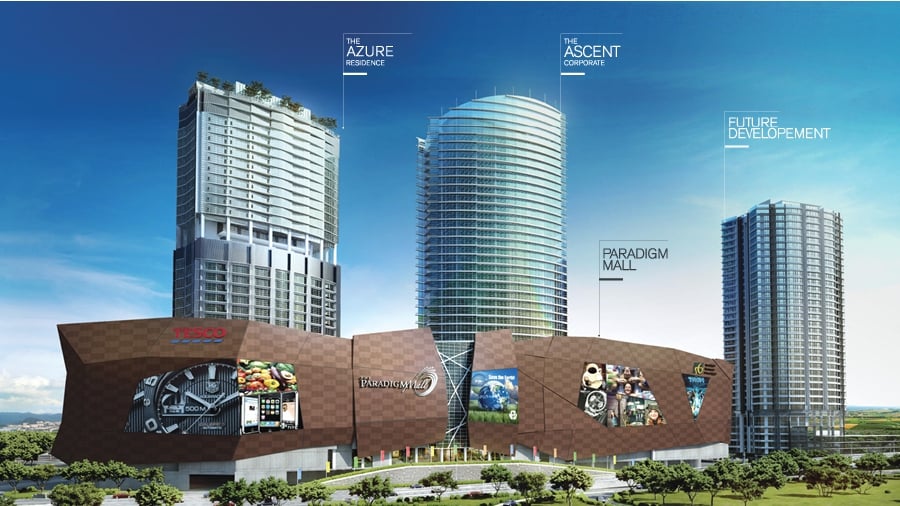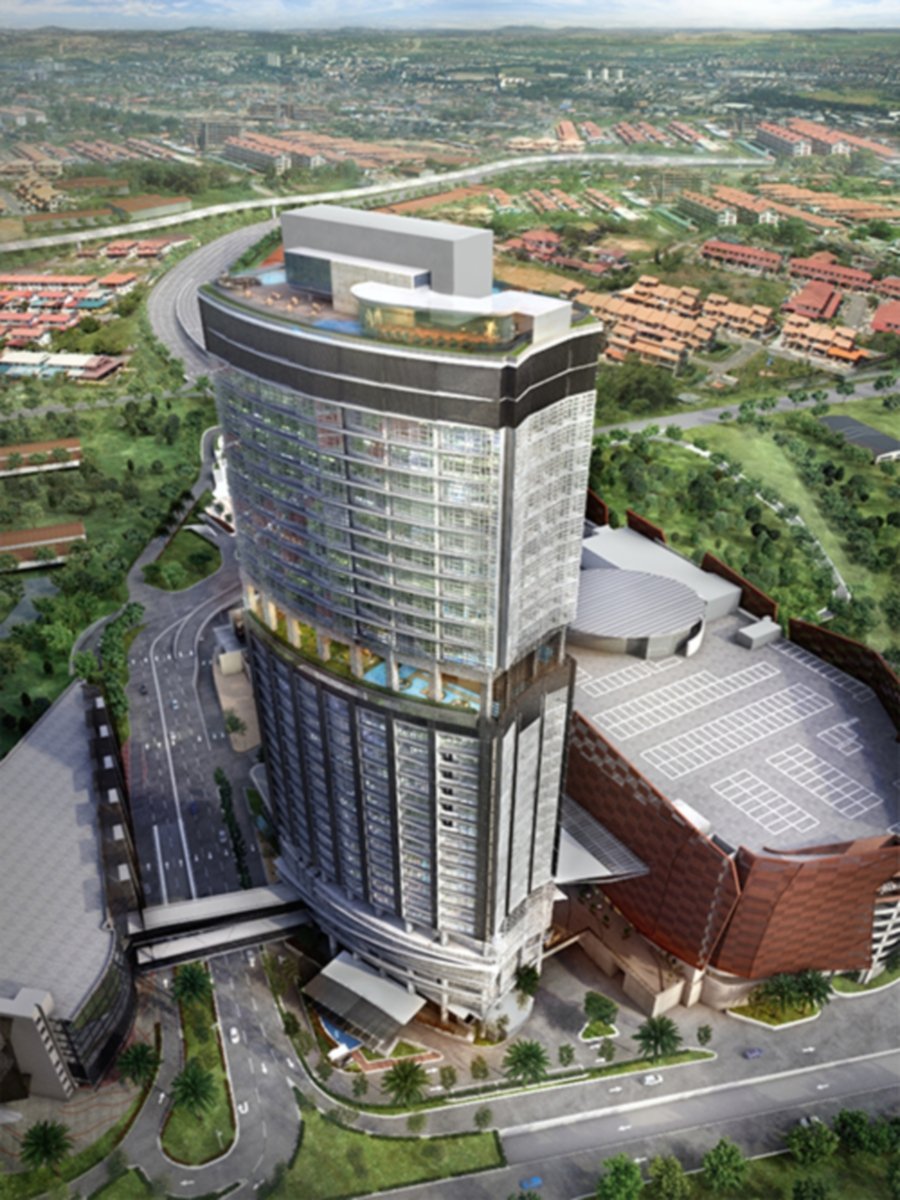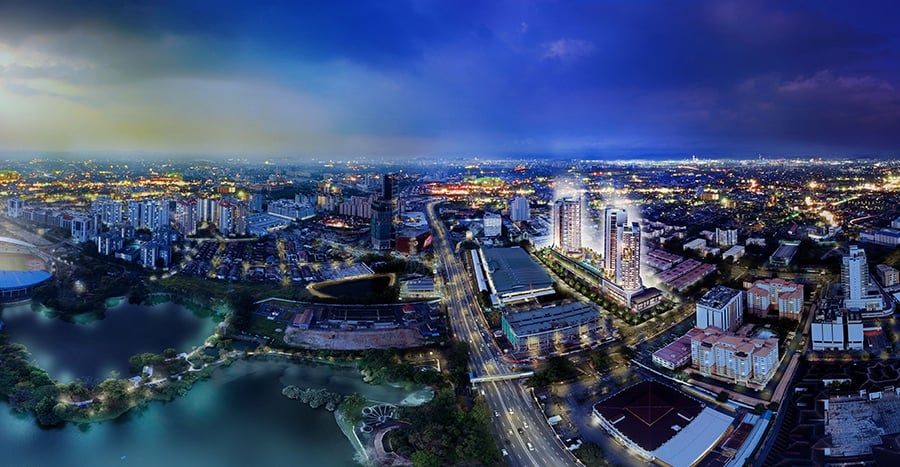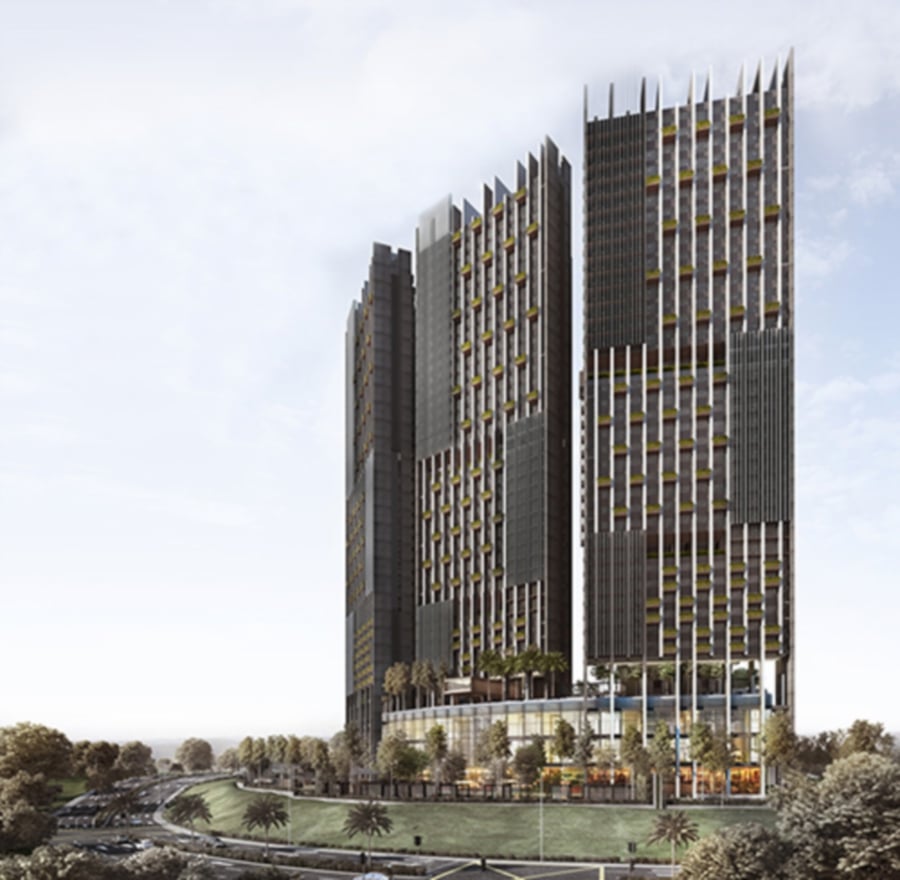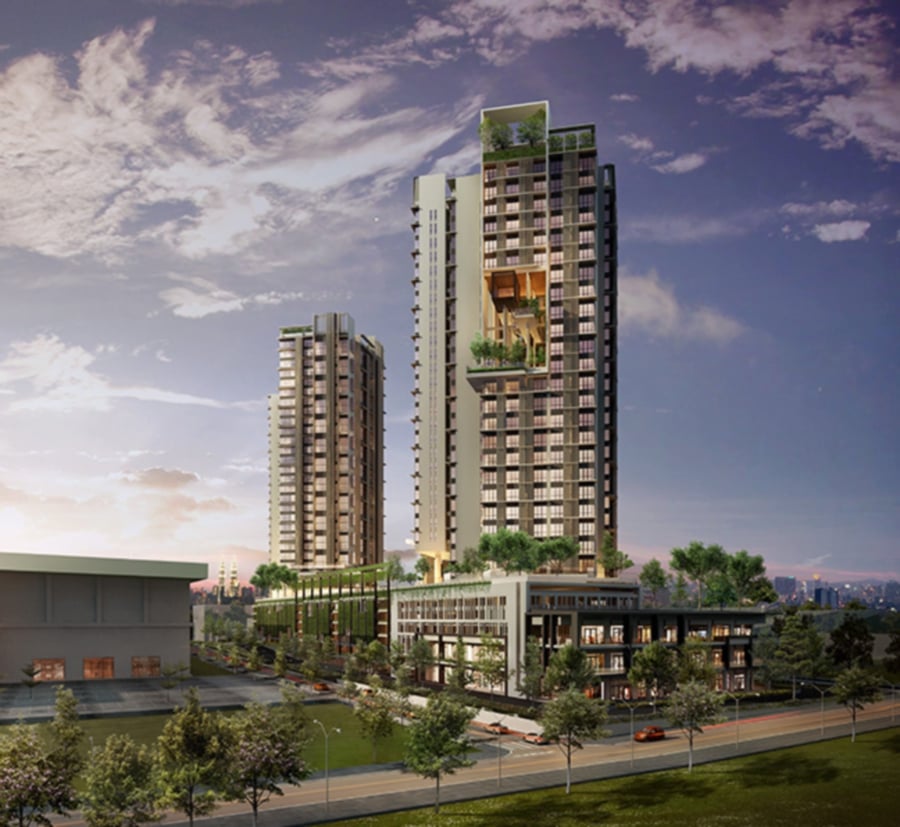Mont Kiara, located in the northwest part of Kuala Lumpur, is considered a premiere real estate location for clients looking for the best spot in the city.
It is just several minutes away from the centre of trade and business in the city, which is the Kuala Lumpur City Centre.
Prime suburban locations, such as the Taman Tun Dr Ismail, Subang Jaya, and Petaling Jaya are also just a short drive away from the area.
Mah Sing Group Bhd chief executive officer (CEO) Datuk Ho Hon Sang said developers with properties in Mont Kiara target the upscale market because they have built homes there using the latest trend in architecture and equipped them with modern technology.
“Development is constant with better structures rising each year along with houses that feature fresh designs in construction,” he told NST Property.
Ho said there will always be demand for quality homes in well-connected locations.
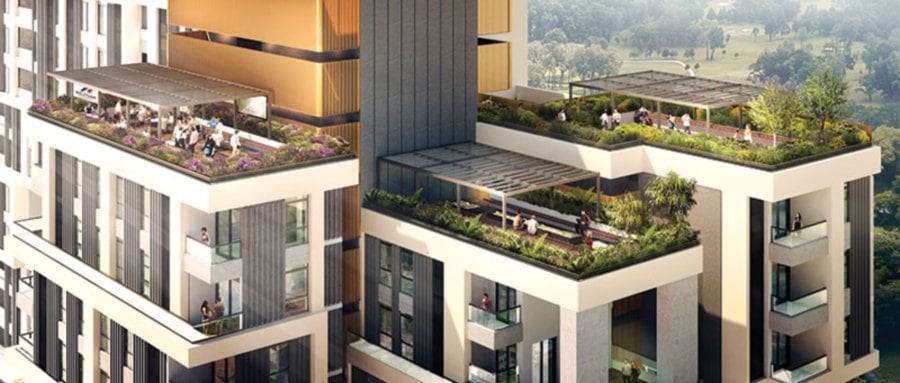
Arcoris Mont’Kiara terrace view
“Residential units in Mont Kiara, such as our Icon Residence, has a demand due to its strategic location near major road arteries such as the Jalan Duta, Jalan Kuching, Penchala Link, Lebuhraya Damansara Puchong, North South Expressway, Duta-Ulu Klang Expressway and New Klang Valley Expressway. It is also close to nearby amenities and developments such as the Hartamas Shopping Centre, the Malaysia External Trade Development Corp office and Solaris Mont’Kiara.
“In today’s property market, a development’s facilities are also an important factor buyers consider before making a purchase. We include a host of facilities in our Icon Residence development as we believe these facilities will enhance the lives of our buyers. Icon Residence also boasts a unique architecture where every unit is a semi-D,” he said.
There are at least 45 to 50 high-rise residential buildings (16,000 to 17,000 units) in the Mont Kiara area.
Even though Mont Kiara is popular among developers, it is yet to be fully developed and there are still large plots of undeveloped land (mostly Malay reserve) available towards the Kiaramas side, said Previndran Singhe, founder and CEO of Zerin Properties.

Mah SIng Group Bhd CEO Datuk Ho Hon Sang.
Hence, the Mont Kiara’s property market will continue to be active, at least for the next 10 years, he said.
“Mont Kiara is already expanding outwards and the area is being branded as Kiara North. Developers are riding on the Mont Kiara name branding as a marketing gimmick to attract buyers,” said Previndran.
Mont Kiara will continue to remain as a preferred location for living due to its strategic location, expatriate population and proximity to amenities and facilities, he told NST Property.
There are many developers who are currently developing in Mont Kiara, with UEM Sunrise Bhd being the most active.
A BUNDANCE INVESTMENT OPPORTUNITIES
Previndran said despite the perceived “glut” in the Mont Kiara property market, there are good investment opportunities for first-time home buyers and investors.
Both should look for units that are well-maintained and close to amenities, he said.
On top of that, they should exercise their bargaining power to get the best deal in terms of purchase prices as they will have more options to choose from with impending supply.
“Non-landed residential units by established developers, especially within mixed developments such as Arcoris Mont’Kiara, will be good investment products as they are in line with current trend whereby more of the younger generation prefer to live in mixed developments for convenience.”
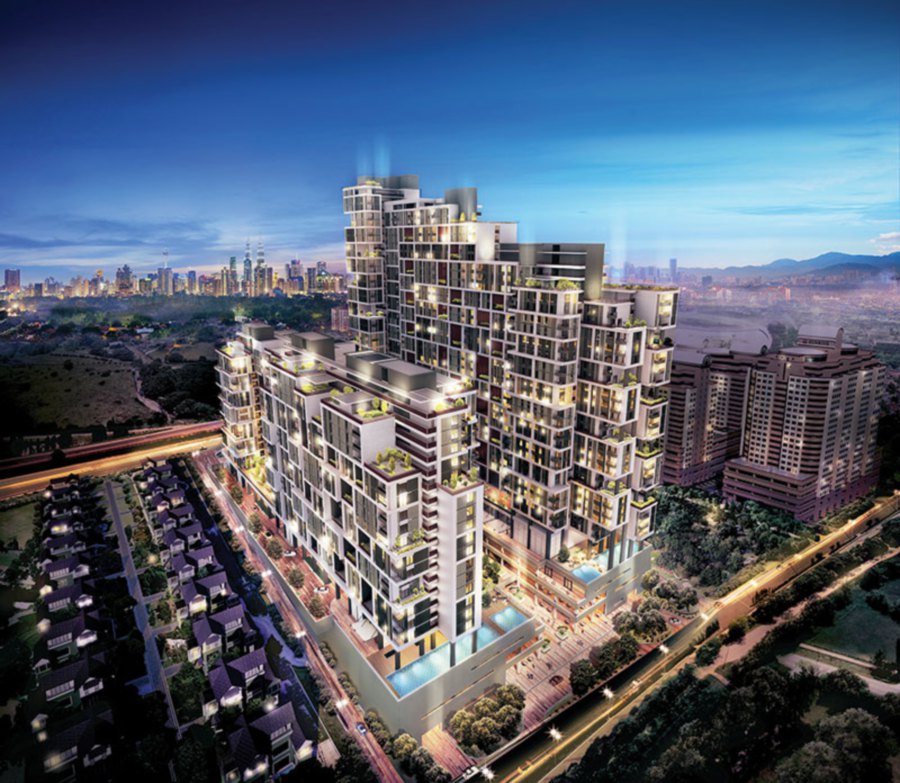
A night view of Arcoris Mont’Kiara.
While there is a huge spread of asking price currently, in view of the present state of the economy, Previndran anticipates both prices and rentals to see some improvement from mid-2018 driven by potential increase in expat population, growing housing demand among locals and overall improvement to the property market.
“Overall, property prices have remained somewhat subdued in the past two years due to slower economy growth and influx of new supply. However, the prices are recording improvement in recent times. The prices have gone up as a result of economy rebound, resilient property market and growing demand from homebuyers,” said Previndran.
There is a good mix of local (including high-net-worth individuals) and expatriates in Mont Kiara now.
Previndran said the existence of several international schools and proximity to amenities and city centre attracts more expatriates to the Mont Kiara enclave, thus increasing demand for housing.
“This makes condominiums within this enclave, particularly those by established developers, highly attractive among the expat community and locals. These factors will remain as catalysts for the Mont Kiara’s condominium market,” he said.
MAH SING EYEING MORE OF MONT KIARA
Mah Sing’s Ho said the group’s current focus is to increase its landbank in Klang Valley to 75 per cent from the current 67 per cent within the next two to three years. Mont Kiara and Mont Kiara North are among its targeted areas.
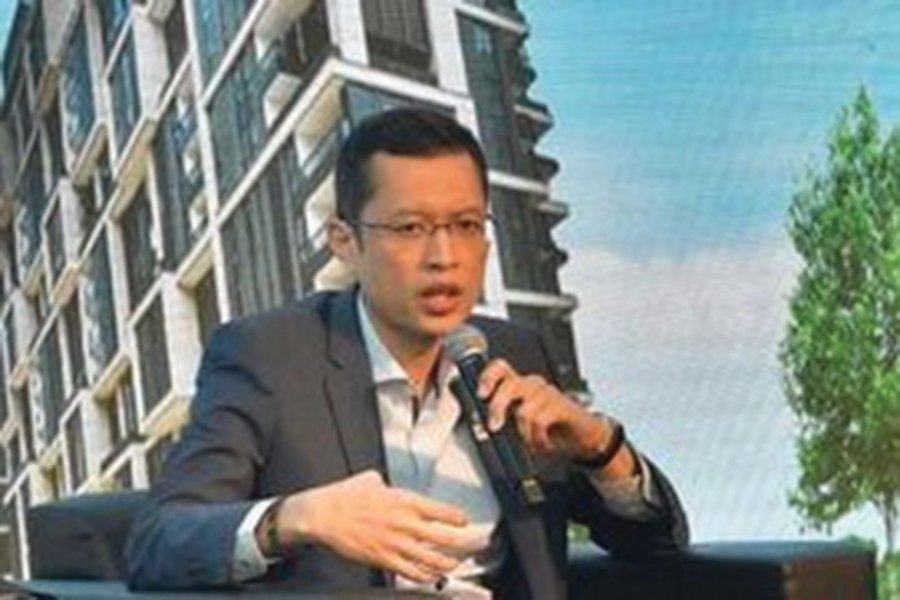
UEM Sunrise Bhd MD and CEO Anwar Syahrin Abdul Ajib.
“Mont Kiara is among possible locations in the Klang Valley for us to explore and we anticipate more potential land acquisitions, joint ventures and investments.
“Our maiden project in Mont Kiara North, Icon Residence has done well. It is an iconic development in the Mont Kiara landscape. With our good track record of delivering quality developments, our customers and investors will be confident should we decide to pursue future developments in the Mont Kiara area,” Ho told NST Property.
Icon Residence was launched in June 2011 and completed four years later. It comprised 290 luxury service apartment units with built-ups from 874 sq ft (one bedroom) to 4,436 sq ft (4+1 penthouse).
The average launch price was RM699 per sq ft (psf) and it has doubled today to RM1,100 psf.
“The capital appreciation is about 40 per cent and this is something we want to replicate,” he said.
Ho believes that the primary market will continue to do well especially with a number of recent property launches in the Mont Kiara area.
There is demand for homes in the range of 800 to 1,300 sq ft. Ho added that these sizes will continue to do well in the current property climate and home value will also appreciate.
“We are also encouraged by the overall take-up rate by buyers. Our Icon Residence, for example, has a healthy occupancy of about 87 per cent, which shows that people still see Mont Kiara as an area they want to stay.
“The capital appreciation of a property depends on market and economic factors. For example, the current market demand is for mass market homes at affordable prices. However there will always be a niche for designer homes for the upgrader market,” he said.
According to Ho, the property market is currently undergoing consolidation but in the mid and long-term, it will continue to be healthy.
As such properties in Mont Kiara will be seeing good gains in the coming years as properties located in right locations will definitely see appreciation, he added.
Moving forward, Ho believes Mont Kiara will expand outwards once land has become limited.
“Mont Kiara started off as a small township but then expanded outwards to include areas such as Segambut Dalam (Mont Kiara North),” he added.
UEM SUNRISE CONTINUES TO LEAD MONT KIARA
UEM Sunrise Bhd has about 14.3ha of landbank in Mont Kiara and the surrounding area, in scattered locations, said its managing director and CEO Anwar Syahrin Abdul Ajib.
Anwar said the company will plan the launches in a timely manner in order to maximise the land’s value and proposition.
“We are not able to say when the land will be fully developed at this stage as we are also developing other non-Mont Kiara land,” he said.
Anwar said the company has no plan to acquire more land in Mont Kiara at this point in time.
The focus currently, he said, is to complete all ongoing projects and plan new launches on its existing landbank there.
Year-to-date, UEM Sunrise has already completed Arcoris Mont’Kiara, featuring business suites, soho units and serviced residences (959 units), and are handing over the properties to purchasers in stages.
The company is targeting to complete and hand over Tower A and B of Residensi22 Mont’Kiara, comprising 534 units, towards year-end.
Residensi22 Mont’Kiara comes with innovative and distinctive features that are formed by two majestic twin towers accommodating 534 freehold units ranging from 1,878 to 3,163 sq ft.
Next year, it plans to launch MK27, a high-rise residential development, and a 719-unit Kondominium Kiara Kasih (Rumawip). In 2019, it hopes to launch the first plot of MK31, which will be a mixture of high-rise and low-rise residential development.
“Do also expect exclusivity for MK31, a mixture of high-rise and low-rise residential project,” Anwar said, without disclosing further details on the development.
(Part II next week)

